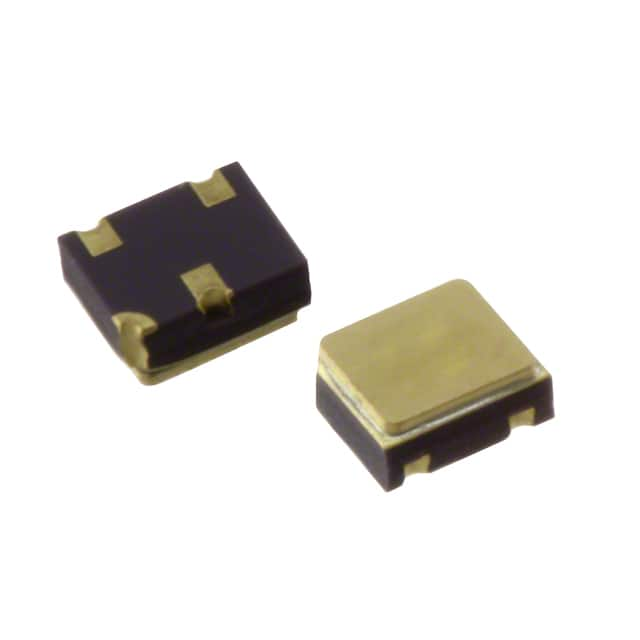2N2222AUB
Product Overview
Category
The 2N2222AUB belongs to the category of bipolar junction transistors (BJTs).
Use
It is commonly used as a general-purpose NPN transistor in various electronic circuits.
Characteristics
- Low power, low frequency amplifier
- Switching applications
- High current gain
- Low collector-emitter saturation voltage
Package
The 2N2222AUB is typically available in a TO-92 package.
Essence
This transistor is essential for amplification and switching operations in electronic circuits.
Packaging/Quantity
It is usually packaged in reels or tubes with varying quantities depending on the supplier.
Specifications
- Collector-Base Voltage (VCBO): 75V
- Collector-Emitter Voltage (VCEO): 40V
- Emitter-Base Voltage (VEBO): 6V
- Collector Current (IC): 600mA
- Power Dissipation (PD): 500mW
- Transition Frequency (fT): 250MHz
- Operating Temperature Range: -65°C to 150°C
Detailed Pin Configuration
The 2N2222AUB has three pins: 1. Base (B) 2. Emitter (E) 3. Collector (C)
Functional Features
- High current gain
- Low noise
- Reliable performance in amplification and switching applications
Advantages
- Versatile usage in various electronic circuits
- High current gain allows for efficient amplification
- Low collector-emitter saturation voltage reduces power dissipation
Disadvantages
- Limited power handling capability compared to other transistors
- Relatively low transition frequency may limit high-frequency applications
Working Principles
The 2N2222AUB operates based on the principles of bipolar junction transistors, utilizing the flow of charge carriers to amplify or switch electronic signals.
Detailed Application Field Plans
The 2N2222AUB finds application in: - Audio amplifiers - Signal amplification circuits - Switching circuits - Oscillator circuits - Voltage regulators
Detailed and Complete Alternative Models
Some alternative models to the 2N2222AUB include: - BC547 - 2N3904 - PN2222
In conclusion, the 2N2222AUB is a versatile NPN transistor with applications in various electronic circuits, offering high current gain and reliable performance in amplification and switching operations.
[Word count: 324]
Lista 10 Vanliga frågor och svar relaterade till tillämpningen av 2N2222AUB i tekniska lösningar
What is the maximum collector current of 2N2222AUB?
- The maximum collector current of 2N2222AUB is 600mA.
What is the typical gain (hfe) of 2N2222AUB?
- The typical gain (hfe) of 2N2222AUB is in the range of 100-300.
What is the maximum power dissipation of 2N2222AUB?
- The maximum power dissipation of 2N2222AUB is 500mW.
What are the typical applications of 2N2222AUB?
- 2N2222AUB is commonly used in switching and amplification circuits, such as in small signal amplifiers, drivers, and switching applications.
What is the maximum voltage across the collector and emitter of 2N2222AUB?
- The maximum voltage across the collector and emitter of 2N2222AUB is 40V.
Is 2N2222AUB suitable for high-frequency applications?
- Yes, 2N2222AUB can be used in moderate frequency applications due to its moderate transition frequency.
Can 2N2222AUB be used in low-power applications?
- Yes, 2N2222AUB is suitable for low-power applications due to its moderate power dissipation.
What are the recommended operating conditions for 2N2222AUB?
- The recommended operating conditions for 2N2222AUB include a collector current of 150mA, a collector-emitter voltage of 30V, and a power dissipation of 500mW.
Does 2N2222AUB require a heat sink in certain applications?
- In high-power or high-temperature applications, it is advisable to use a heat sink with 2N2222AUB to ensure proper thermal management.
Are there any common failure modes associated with 2N2222AUB?
- Common failure modes for 2N2222AUB include thermal runaway under high current conditions and breakdown due to excessive voltage stress. Proper design and operating conditions can mitigate these risks.


